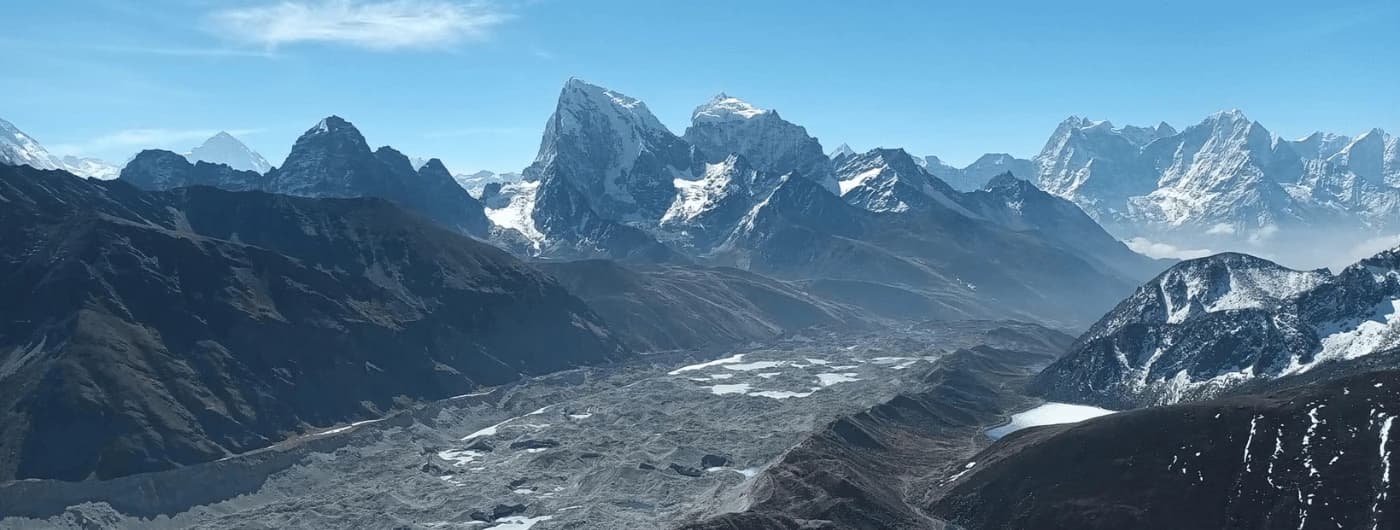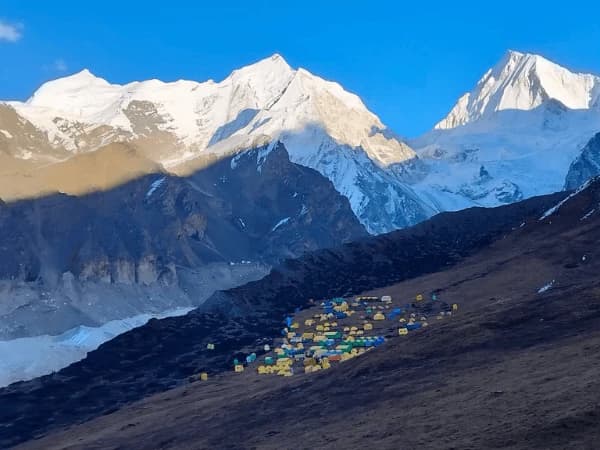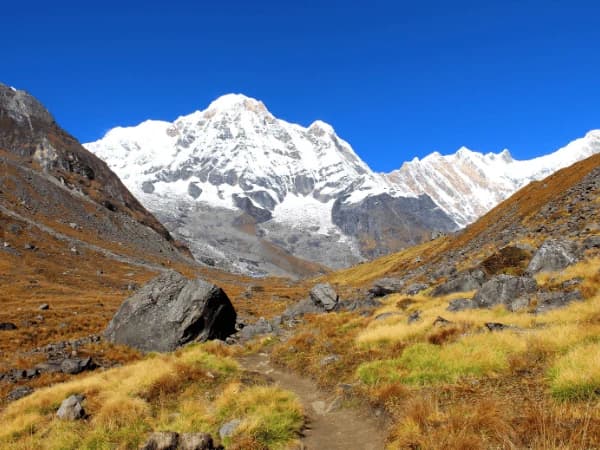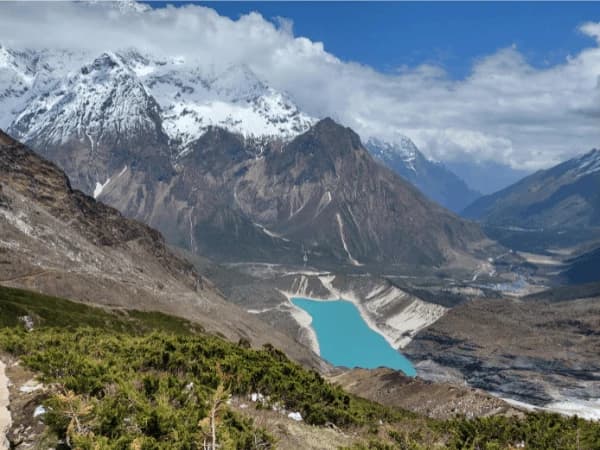Everest Base Camp Trek is a dream journey for many, but is it getting too crowded? Learn about the best time to trek, accommodation availability, costs, and challenges. Find out how beginners and families can do this trek and why it remains the most popular in the world.
Is the Everest Trek More Crowded?
Most Popular & More Crowded Everest Trek
When we talk with travelers, the first question will be for us: Is the Everest Trek More Crowded? Yes, the Everest Base Camp Trek has become most populer & more crowded over the years, especially during peak seasons. The trek attracts thousands of trekkers annually, drawn by the allure of Mount Everest and the stunning landscapes. The busiest months are March to May (spring) and September to November (autumn), when weather conditions are ideal: clear skies and moderate temperatures. During these times, teahouses fill up quickly, trails bustle, and major viewpoints like Kala Patthar and Tengboche can get crowded.
The increasing popularity of social media and adventure tourism has also contributed to the crowd surge. Many trekkers dream of capturing stunning sunrise views of Everest, which results in traffic on narrow trails, especially at suspension bridges and steep ascents. The Everest region has seen a rise in luxury trekking and helicopter tours, bringing in more visitors who may not even complete the full trek but visit major spots, adding to the congestion.
For those looking to avoid the crowd, alternative routes such as Gokyo Lakes Trek, Everest Three Passes Trek, and taking the Jiri to EBC route offer quieter trails with equally breathtaking scenery. Choosing the off-season (winter or monsoon) or trekking during late February or early December can also provide a more peaceful experience.
Despite the crowds, the Everest trek remains an unparalleled adventure, offering cultural insights, breathtaking mountain views, and a sense of accomplishment unmatched by any other trek in the world.
When Will the Less Crowd Be in Everest?
The Everest Base Camp Trek is most crowded during spring (March-May) and autumn (September-November), as these seasons offer the best weather conditions. If you prefer a quieter experience, consider trekking during the off-season.Winter (December-February) sees significantly fewer trekkers, but the cold temperatures, which can drop to -20°C at higher altitudes, require proper gear and preparation. The monsoon season (June-August) is another less crowded period, but frequent rains, landslides, and poor visibility make it less ideal. However, if you love lush green landscapes and are okay with unpredictable weather, monsoon trekking can be a unique experience. The best time to avoid crowds while still enjoying good weather is late February to early March and late November to early December. During these windows, you get stable weather, clear skies, and fewer people, ensuring a peaceful trekking experience.
How Difficult Is It to Get Accommodation During the Main Season?
Accommodation availability during the peak trekking seasons (spring and autumn) is one of the biggest challenges for trekkers. In places like Namche Bazaar, Tengboche, Dingboche, and Gorak Shep, lodges fill up quickly, and trekkers often need to share rooms or even sleep in dining halls when rooms are unavailable. Many budget teahouses operate on a first-come, first-served basis, so arriving early at your destination is crucial. Pre-booking through a trekking agency like Overland Trek Nepal is the best way to ensure a comfortable stay. Luxury lodges with attached bathrooms are available at lower altitudes but get booked months in advance. If you are trekking independently, you may have to settle for basic accommodations with shared toilets and limited heating. To increase your chances of securing a room, start trekking early in the morning, reach your destination before others, and avoid peak rush hours. A good alternative is camping, but it requires additional gear and logistics.
When Is the Best Time to Do Everest Base Camp Trek?
The best time to trek to Everest Base Camp depends on your priorities—whether you want the best weather, fewer crowds, or a more budget-friendly trip. Spring (March-May) is considered ideal because of mild temperatures, blooming rhododendrons, and stable weather. Autumn (September-November) is another great time with clear skies, breathtaking views, and moderate temperatures. These are the busiest seasons, meaning crowded trails and full lodges. If you want fewer crowds and don’t mind extreme cold, winter (December-February) offers a quieter and more peaceful trek, with snow-covered landscapes adding to the beauty. Monsoon (June-August) is the least preferred season due to heavy rainfall, landslides, and poor visibility, but it is still possible to trek. For those looking for the perfect balance of weather and fewer crowds, late February to early March and late November to early December are excellent options.
What Is the Average Cost to Do Everest Base Camp Trek?
The cost of an Everest Base Camp Trek varies depending on factors like trekking style, services included, and season. On average, a budget trek costs $1,200 to $1,800, covering permits, accommodation, food, flights, and guide/porter services. If you opt for a mid-range package, expect to pay between $1,500 and $3,500, including better accommodations, extra services, and emergency support. Luxury treks with high-end lodges,helicopter returns, and personalized services can cost over $5,000. Additional expenses include gear rental, snacks, hot showers, charging fees, WiFi, and tips. Booking through a reputable trekking company like Overland Trek Nepal ensures transparent pricing and better service.
How Easy Is It to Do EBC Trek with Family and Kids?
Trekking to Everest Base Camp with family and kids is possible with proper planning. Children above 8 years old can complete the trek with a gradual itinerary, extra rest days, and proper acclimatization. Hiring porters to carry luggage makes the journey more manageable. Choosing comfortable teahouses with heating, better food, and attached bathrooms enhances the experience for families. Parents should ensure their children are physically fit and mentally prepared for long trekking hours and altitude changes. Having a first-aid kit, necessary medications, and a flexible itinerary is essential for safety.
Can Beginners Do the Everest Base Camp Trek?
Yes, beginners can complete the Everest Base Camp Trek with proper preparation. The trek is challenging but doesn’t require technical climbing skills. Training for at least two months with cardio, strength exercises, and practice hikes is recommended. Beginners should opt for longer itineraries with acclimatization days and consider hiring a guide for navigation and support. Drinking plenty of water, following a slow pace, and understanding altitude sickness symptoms are key factors for a successful trek.
Why Has Everest Base Camp Trek Become More Popular in the World?
Everest Base Camp Trek is one of the most sought-after treks globally due to its breathtaking scenery, cultural experiences, and adventure appeal. Walking in the footsteps of legendary climbers like Tenzing Norgay and Edmund Hillary, experiencing Sherpa culture, and witnessing majestic peaks like Everest, Lhotse, and Ama Dablam make this trek unique. The rise of social media, adventure tourism, and documentaries has further boosted its popularity.
Alternative Routes to Avoid Crowds on the Everest Trek
For trekkers looking to avoid the crowds on the Everest Base Camp trek, there are several alternative routes to consider:
- Gokyo Valley Trek – Experience the turquoise Gokyo Lakes and breathtaking views of Everest while avoiding the busiest trails.
- Everest Three High Pass Trek – A challenging trek crossing three major passes (Kongma La, Cho La, and Renjo La) for adventure lovers.
- Everest Base Camp Trek without Flight (By Road) – Avoid the crowded Lukla flight and trek from lower altitudes via Jiri or Salleri.
- Pikey Peak Trek – A hidden gem offering panoramic Everest views and authentic Sherpa culture.
- Everest View Trek – A shorter trek reaching stunning viewpoints without going all the way to Base Camp.
- Ama Dablam Base Camp Trek– A scenic and less-traveled route leading to the base of one of the world's most beautiful peaks.
- Renjo La Pass Trek – A quieter alternative to the classic EBC route with mesmerizing Himalayan landscapes.
How Is Food, Accommodation, and Drinking Water in Everest?
Food in the Everest region is mainly traditional Nepali,Tibetan, and basic Western cuisine. The staple dish is Dal Bhat (rice, lentils, and vegetables), providing a nutritious and energy-boosting meal for trekkers. Other options include noodles, soups, pasta, momos, and fried rice. Snacks like chocolates, biscuits, and energy bars are also available but costlier at higher altitudes. Accommodation ranges from basic teahouses with shared facilities to luxury lodges with attached bathrooms. Drinking water can be obtained from streams, teahouses, or bottled sources, but it is recommended to use water purification tablets or portable filters to ensure safe drinking water.
Electricity, WiFi, and Hot Shower Facilities in the Everest Region
Electricity is available in most teahouses, but charging electronic devices incurs an extra fee, ranging from $2 to $5 per hour. WiFi is accessible in major villages like Namche Bazaar, Dingboche, and Gorak Shep, but it is often slow and expensive. Mobile data (Everest Link and Ncell) is available but unreliable at higher elevations. Hot showers are available in teahouses for an additional charge, usually $5 to $10 per shower, with prices increasing as you ascend. Some lodges offer bucket showers with heated water as an alternative.
Conclusion
The Everest Base Camp Trek remains one of the most exhilarating adventures in the world. Despite increasing crowds, careful planning can help trekkers enjoy a less crowded, budget-friendly, and rewarding experience. Whether you’re a beginner, trekking with family, or a seasoned hiker, this trek promises a lifetime of memories and breathtaking Himalayan views.




